#afghanart
Text

Join us upstairs on Saturday, November 18 at 2:00 p.m. for a special Cultural Fair Series presentation: Afghan Culture & Art!
Meet with successful Afghan professionals Wazma Taheri and Mumtaz Momand; learn about Afghanistan and Afghan women’s clothes with presenter Marva Saydee; enjoy live Afghan music and an Attan dance performance by Naim Hakimi and his team; browse Shughla Karzai’s artwork exhibition and create your own artwork.
The program is generously sponsored by California Humanities.
#escolibrary#cultural fair series#library#afghan culture#afghanart#escondido ca#north count ysan diego#city of escondido#free event
1 note
·
View note
Photo

In times like these we could all do with a little #sabr, #patience. So this shirt has been designed to remind you, or someone you care for to practice sabr (patience). You can purchase it below at my online store for $45.00 AUD (I've got a few other designs too) and support the growth of Sabr Stones. Sabr صبر Literally 'patience', 'endurance', or more accurately 'perseverance' and 'persistence'. The pics below are the first of a few designs that are available at - https://www.etsy.com/au/shop/SabrSouk Thank you for your support - and remember let time make it better not make you bitter. #SupportSmallBusiness #mysidehustle #design #mensfashion #menswear #sabr #calligraphy #islamicart #islamicreminders #unique #universal #simple #dari #arabic #arabiccalligraphy #middleeastern #middleeasternart #afghanfashion #afghanart #patience #sabrstones #patienceisthekey #patienceisavirtue #louisvuitton #versace #culture #fashion #art (at Sydney, Australia) https://www.instagram.com/p/CSCHxEKJMfB/?utm_medium=tumblr
#sabr#patience#supportsmallbusiness#mysidehustle#design#mensfashion#menswear#calligraphy#islamicart#islamicreminders#unique#universal#simple#dari#arabic#arabiccalligraphy#middleeastern#middleeasternart#afghanfashion#afghanart#sabrstones#patienceisthekey#patienceisavirtue#louisvuitton#versace#culture#fashion#art
3 notes
·
View notes
Text
بهار
Spring

بهار
Spring
By زلمی حرمان Zalmai Herman
Artwork by Maria Hosein-Habibi
به کلک یار بگفتم
To my friend, my pen, I said
بيا گره بزنيم!
let's tie the knot!
به ساق سبزرنگ علف
To the tall grass
به زلف پیر همين عمر رفته در پرواز
to the old-man-in-the-spring,
this fleeting life
کنار فرش طبيت به همنشینی مهر
let us sit together with love close to nature’s ceded matting
بيا که نوش کنیم جام زندگی با هم
Come, that we may together sip from life’s vessel
به برگ لاله نوشتم که ای بهار
On the tulip petal, I wrote,
“Oh spring,
سلام
hello"
به فصل پر پر دل در دم تفنگ و ستم
In the season of the winged heart in the times of guns and tyranny
و غصه بر لب طفل
and the gloom on the child’s lips
به روزگار چنين!
in moments like this!
This poem, by Sweden-based Afghan writer Zalmai Herman, was published in the April 1998 issue of AfghanMagazine.com.
It was translated from the Farsi Dari by Farhad Azad.
The artwork is by the artist Maria Hosein-Habibi.
2 notes
·
View notes
Photo
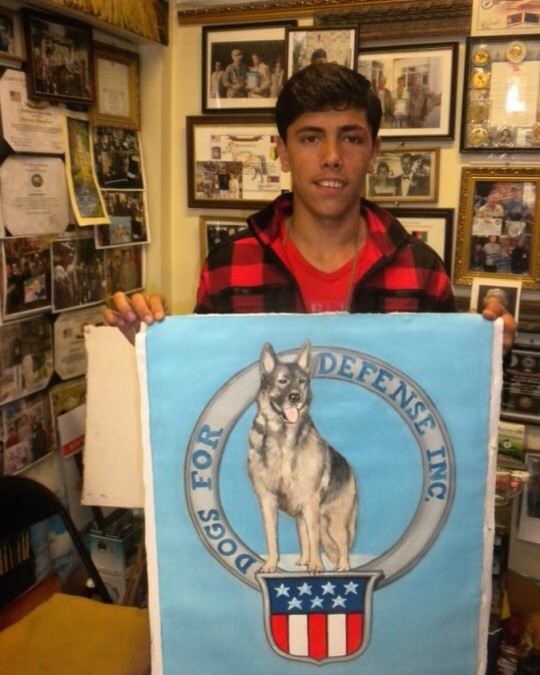
In Kabul, Afghanistan on Camp Eggers, this young Afghan boy did a commissioned painting of our logo. Not a bad job and one we will always remember. #dogsfordefense #d4d #k9 #bombdog #gsd #germanshepherd #workingdog #afghanartist #afghanart (at Camp Eggers Kabul Afghanistan) https://www.instagram.com/p/B-cTyy6hgi2/?igshid=17y1pq1we3zct
1 note
·
View note
Text
DOODLES FROM TODAY (please follow my art ig unce2014 its so dry)
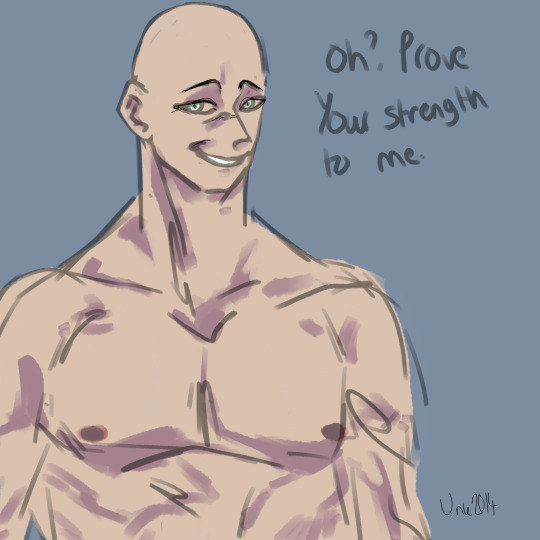
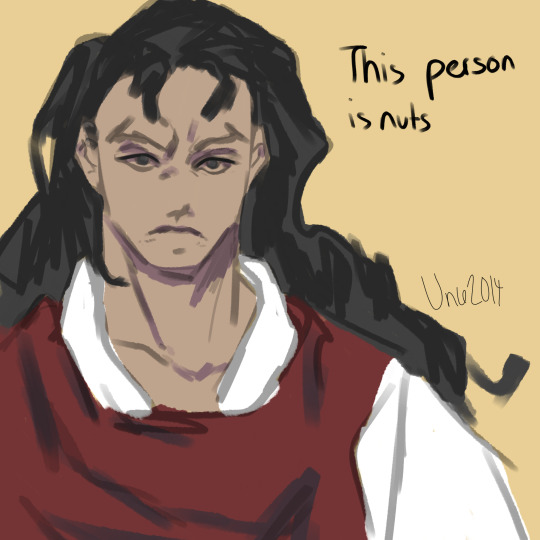

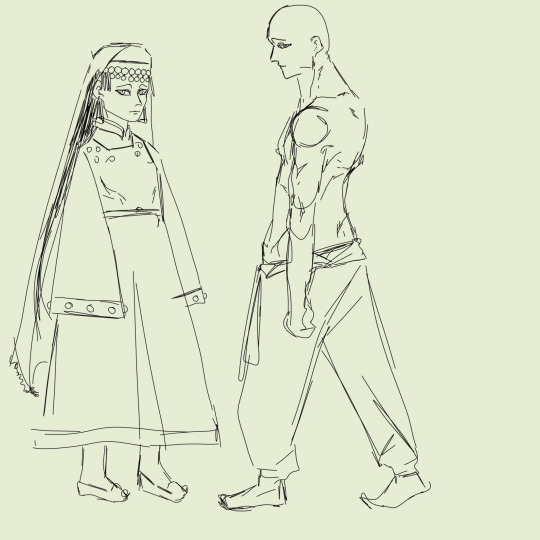
1 note
·
View note
Photo
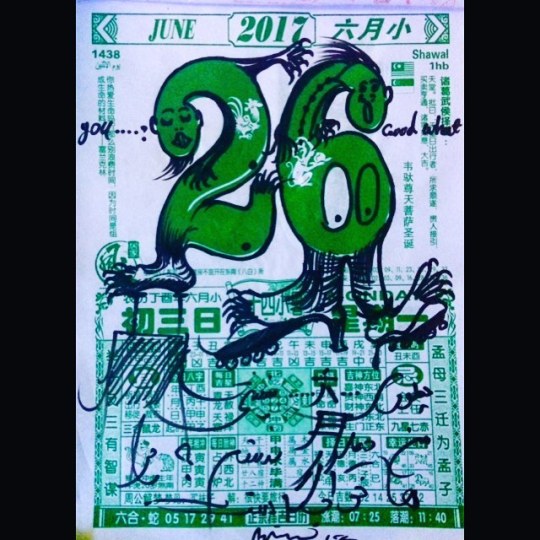
Daily Drawing #amintaasha 20x30 cm On Calendar paper #afghanistan #afghanarts #taashaam #2017 #june #26 #followme #dailydrawing #indonesia #artsy #instaart #instagood #gallery #masterpiece #creative #instaartist #artoftheday #artfido #paint #painting #visualsoflife (at Central Java)
#followme#afghanistan#instagood#instaartist#indonesia#painting#creative#june#artoftheday#amintaasha#dailydrawing#taashaam#artsy#paint#2017#afghanarts#gallery#artfido#26#visualsoflife#instaart#masterpiece
2 notes
·
View notes
Text
Artists Transforming Afghanistan
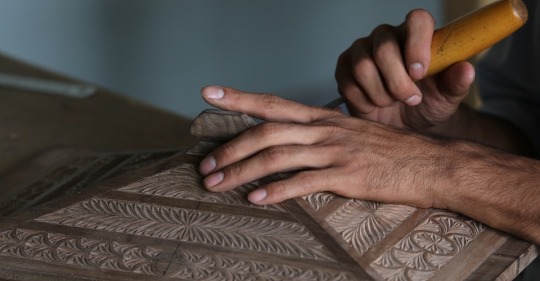
SMITHSONIAN MUSEUM, WASHINGTON DC
From its critical position on the ancient Silk Road that stretches from Europe to China, Afghanistan absorbed traditions from India, Persia, and Central Asia and blended them into a distinct artistic culture. Decades of civil unrest that began in the 1970s nearly destroyed this vital heritage. Many of Afghanistan’s artisans were forced to leave their country or give up their craft. The old city of Kabul, once a bustling center of craft and commerce, fell into ruin.
To tell the transformative story of culture and heritage in Murad Khani, Afghan woodworkers have created magnificent wood arcades, screens, and a pavilion, all carved by hand from Himalayan cedar. Wander among these arcades and explore spectacular contemporary carpets, jewelry, and calligraphy, all complemented by videos and large-scale photographs of the Afghan artisans who made them. Artisans from Murad Khani are bringing the exhibition to life by demonstrating their art, sharing their experiences, and allowing visitors to encounter Afghanistan’s art and culture firsthand.
youtube

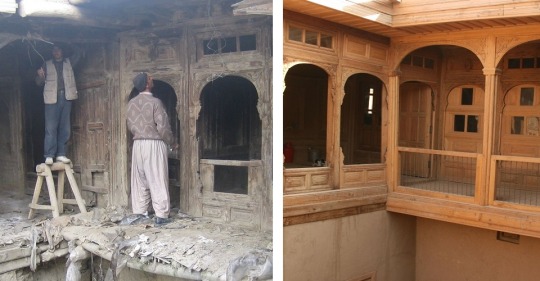
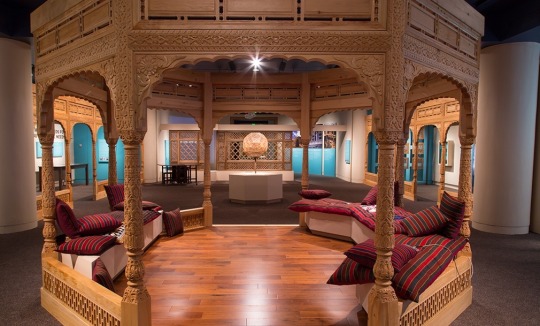
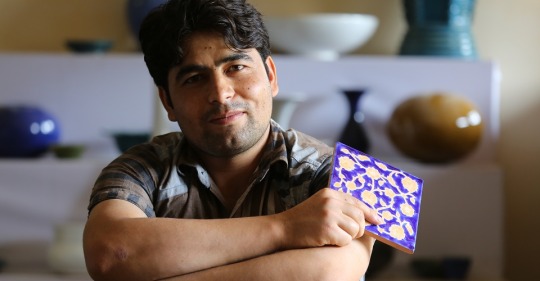
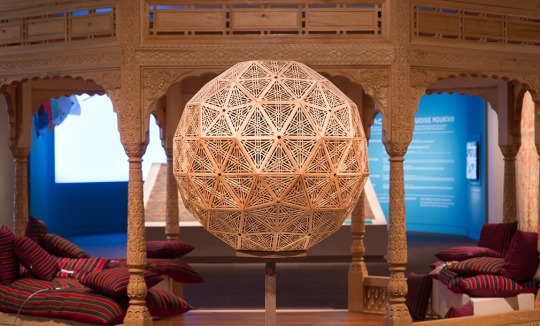
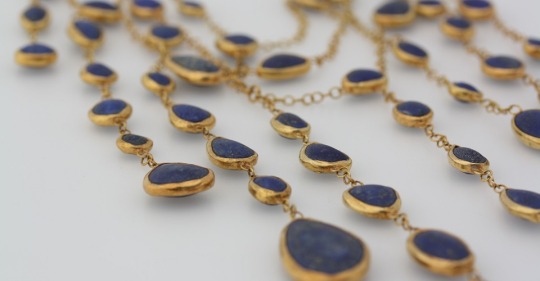
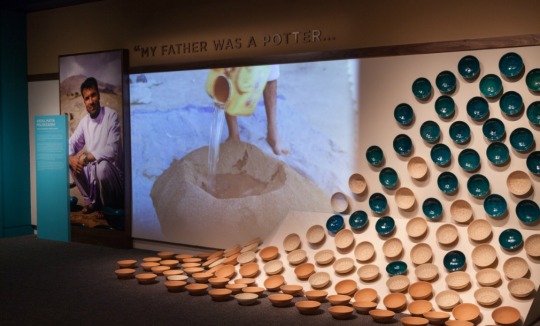
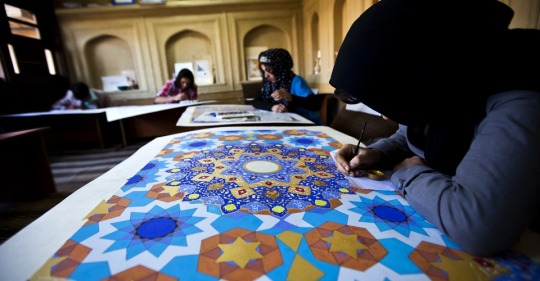
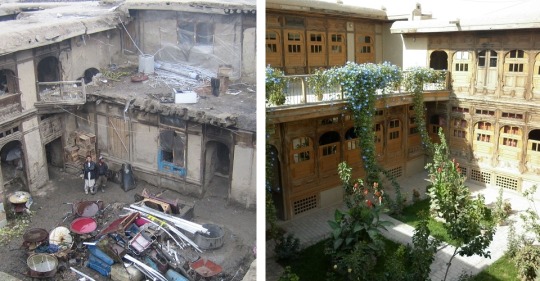

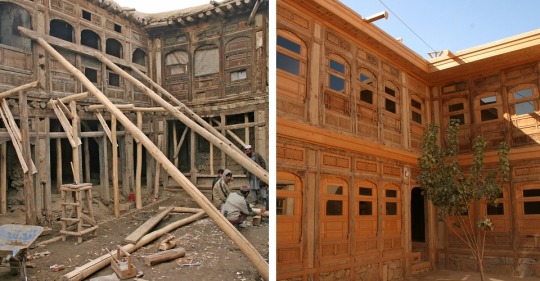
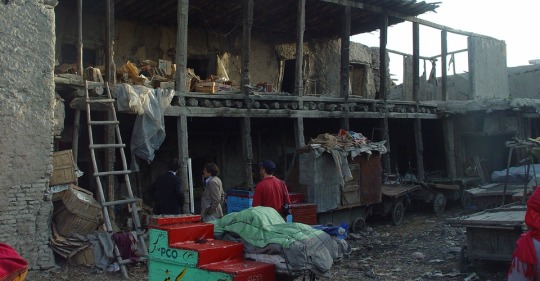
Turquoise Mountain: Artists Transforming Afghanistan is organized by the Arthur M. Sackler Gallery and the Turquoise Mountain Trust. Open now through October 2017
Photo credit: Turquise Mountain, Arthur M. Sackler Gallery
#turquoisemountain#sacklergallery#smithsonian#afghanistan#afghanart#afghancrat#craftsmanship#art#architecture#urbanregeneration#kabul#kabuloldtown#silkroad#craftmatters#woodcarving#pottery#ceramics#calligraphy#antientcraft#sustainabledesign#sustainablecraft#honestdesign#handcrafted#ethicaldesign#ethicalsourcing#consciousdesign#consciouslife#oldtownregeneration#urbanrehabilitation#artexhibition
0 notes
Photo
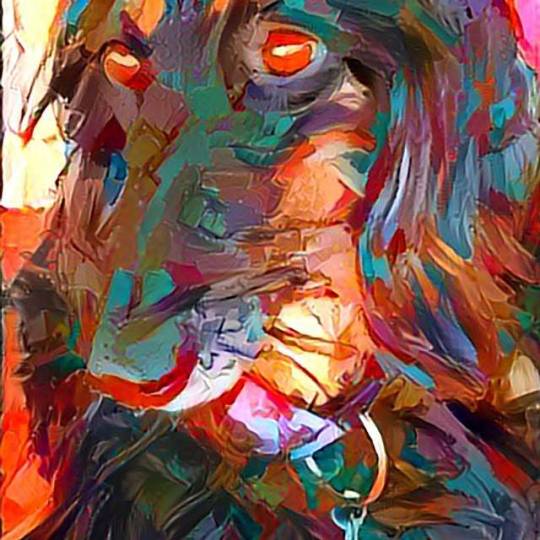
From a photo of Louis my Afghan Hound https://www.redbubble.com/people/lafrancedesigns/works/26889219-afghan-hound-by-sonya-lafrance?asc=u&ref=recent-owner #afghanart #dogart #dogbedspread #afghanhound #doggifts #dogowner #artforsale #prints #coffeemug #stickers #cellphonecovers #pillows
#dogart#doggifts#dogowner#dogbedspread#coffeemug#stickers#afghanhound#prints#afghanart#cellphonecovers#pillows#artforsale
0 notes
Photo

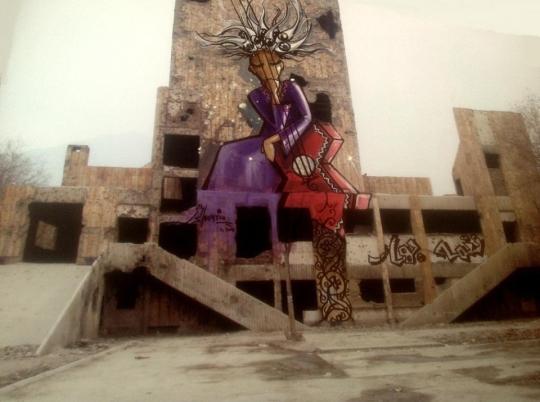
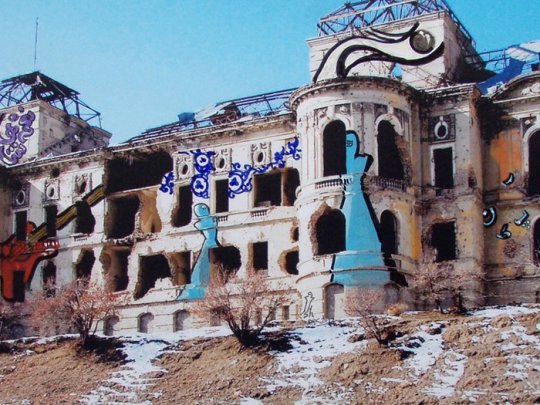

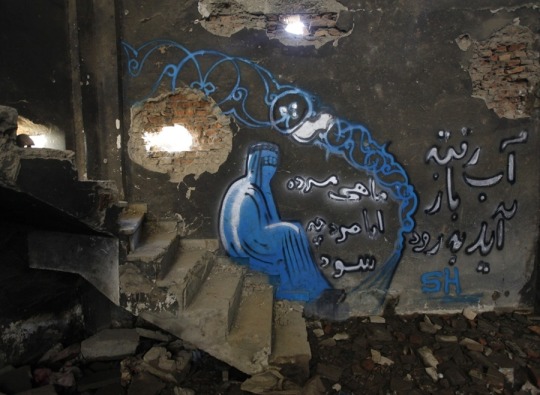

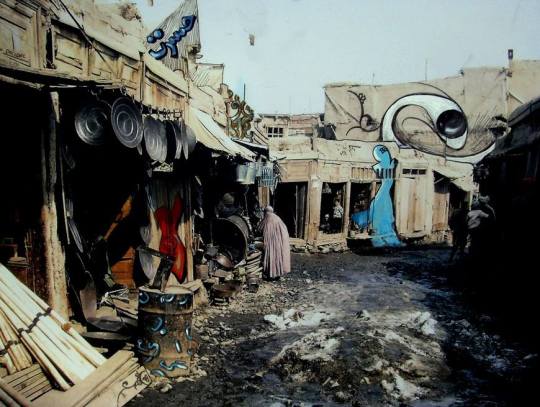
Painting in times of war
Shamsia Hassani cover with happy colors places where everything is sad, dark and depressed. She is a Graffiti Artist (Kabul, Afghanistan) who uses her art to help changing people’s minds through paintings reflecting Afghan women with freedom and no limitations.
"I want to colour over the bad memories of war on the walls...I want to make Afghanistan famous because of its art, not its war"
Drawing women with burqas is intended to express the reality/tragedy that they live, but the artist doesn't forget their dreams, feelings and hopes, which are also represented through fishes, music symbols, and happy women.
This type of art causes changes in people since they have the opportunity to see the world in a different way, without war and meanness.
2 notes
·
View notes
Photo

#white #threadwork #afghanwomen #afghanart
0 notes
Video
Looking through old folders, I discovered a few drawings from a friend, Hashim Sanjar. He had gifted them to me before he moved from Northern California to Australia over 20 year ago.
This one drawing stood out the most for me because it reflected a rural Afghan man before the wars, showing an expression of hope and confidence.
— Farhad Azad
Vocals:
Ustad Sarahang استاد محمدحسین سرآهنگ
2 notes
·
View notes
Photo

Congratulations @nesar_eesar berar wish you all the best keep going on and thank you for your special gift (my portrait) #indonesia #amintaasha #drawing #draw #picture #artist #sketch #papar #artsy #instaart #beautiful #instagood #gallery #masterpiece #creative #photooftheday #instaartist #afghanart #artoftheday #artfido #afghanistan #paint #painting #artwork #artpurplefeature #artsingapore #indoartnow #contemporary #contemporaryart #visualsoflife (at Indonesian Institute of the Arts, Yogyakarta)
#masterpiece#instaartist#instaart#indonesia#artoftheday#painting#picture#artwork#drawing#artist#visualsoflife#creative#papar#afghanart#contemporary#gallery#beautiful#artpurplefeature#artsingapore#contemporaryart#artsy#instagood#indoartnow#paint#photooftheday#amintaasha#sketch#draw#artfido#afghanistan
0 notes
Text
Mazhab Partitions
Biz Iqbal (Rasam) showcased his first piece at the UC Berkeley Master of Fine Arts Spring 2020 exhibit.
In this video, he explains his work Mazhab Partitions (2019. Metal, fabric, leather, wood, mylar, 86” x 88” x 75”), which uses objects that have a strong influence on the people and the ongoing war inside Afghanistan.
vimeo
1 note
·
View note
Text
Against Darkness: The Art of Hamdard
By Farhad Azad
From the March 2004 issue of Afghan Magazine | Lemar - Aftaab
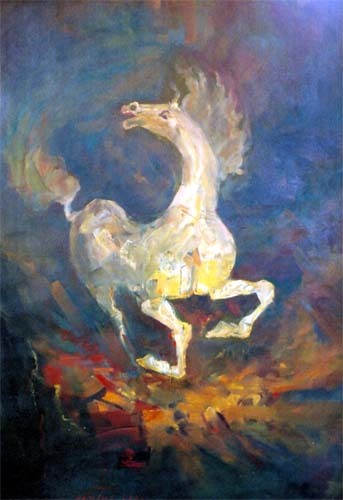
“Untitled” oil on canvas by Abdul Hamdard
In September 2002 I led an art and culture tour to Afghanistan. Expecting only to find broken monuments and remaining shattered artifacts, I was thrilled upon my visit to the Coordination of Humanitarian Assistance (CHA) art gallery.
Disguised as a house in the Shar-e-Now district in Kabul, the gallery, one of the few art galleries open at the time, was packed with contemporary artwork by leading Afghan artists.
After entering the main gallery space, I noticed that a previous exhibition was coming down. Fascinated by the work, I inquired about the artist and a staff member politely pointed me to a well-groomed, petite gentleman standing by the main window.
We were quickly introduced. His name was Abdul Hamdard. He presented his remarkable paintings, which were rich with frank sociopolitical themes.
Abdul Hamdard, born in 1961 in the Helmand province in southern Afghanistan, graduated from the Department of Fine Arts at Kabul University. During the 1980s, he participated in many exhibitions in Kabul and won numerous honor for his work.
During the past decade of turmoil, he was a first-hand witness to the horrors that transpired. No doubt these influences are apparent in his works.
Before departing the gallery, Hamdard openly remarked that he and his works are against oppression and tariki (darkness).
Selected Artwork from Abdul Hamdard from 2001 Kabul
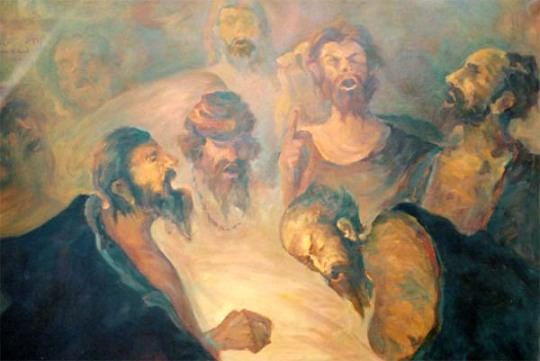
“The Party of the Fanatics” oil on canvas
Hamdard noted in this work that fanatics only hear themselves and never care to listen or think about any other perspective than their own. Each believes and demands his idea is the righteous one.
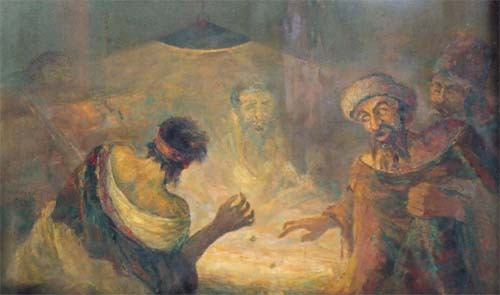
“The Fanatics Gamblers” oil on canvas
Hamdard saw the fanatics as gamblers who took risks with the lives of people, a reflection of the civil war of the 1990s.
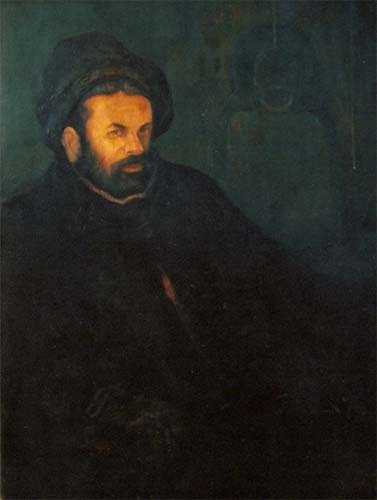
“Self Portrait” oil on canvas
Hamdard wearing a black cloak uncomfortably staring while in the background is a silhouette of the Giant Buddha of Bamiyan with a noose around its neck.
More About Abdul Hamdard

Photo of Abdul Hamdard by Farhad Azad, September 2001, Kabul
Afghan Artist, Admired Around the World, Yearns for Acceptance at Home NY Times Nov 2012
4 notes
·
View notes
Text
Shattered History and Hope at Maimanagi Art School
By Farhad Azad
April 18, 2019
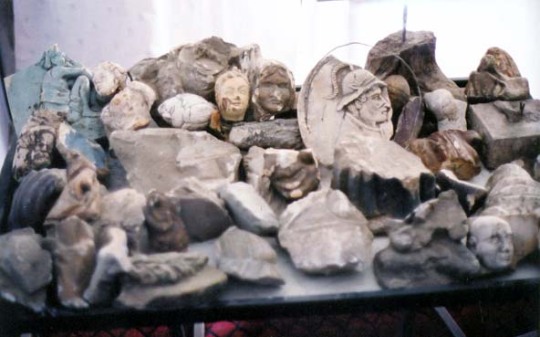
"Shattered History"
Mixed Materials, By Students at Maimanagi Art School, Kabul September 2002, Photo by Farhad Azad, Kabul 2002
"Shattered History" was a display containing replicas of broken historical artifacts by students at the Maimanagi Art School in Kabul. It symbolized the systematic destruction of Afghanistan’s cultural relics when a group of high ranking Taliban officials entered the Kabul Museum and destroyed hundreds of artifacts in February 2001. The memory of this offense was fresh in the minds of the students.
Maimanagi Art School
The Maimanagi Art School was inaugurated in the early 1930s. It was named after the first Afghan who studied western art, Ghulam Muhammad Musawwer Maimanagi (1873 - 1935). Maimanagi, born Maimana (میمنه) in Faryab (فاریاب) province, was a descendant of the Uzbek amirs of Maimana. He moved to Kabul (کابل) at the age of eight, studied fine art in Europe, and taught western art in Kabul.
In 2002, the Maimanagi Art School reopened. Today the school teaches miniature painting, calligraphy, woodworking, painting, sculpture, embroidery and jewelry-making and is open to the public.

[Caption: Teacher at Maimanagi Art School conducting a lesson on sketching techniques. Photo by Farhad Azad, Kabul 2002]
More about the destruction of Afghan art at the Kabul Museum
Video: BBC Destruction in Kabul: I watched as the Taliban destroyed my life's work“
“Yahya Muhibzada worked at the museum at the time. He looked on helplessly as members of the Taliban destroyed countless pieces of art.
He spoke to Witness about that day and the painstaking process of restoring some of the art in the years after the attack.”
youtube
See the above video story at the BBC SIte, January 20, 2016
Once destroyed by the Taliban, the Buddha statues live again
BBC story, April 18, 2019
“The BBC's Shoaib Sharifi visited the National Museum in Kabul where a team are rebuilding some of the ancient Buddha sculptures that were destroyed by the Taliban.”
0 notes
Text
Cultural Taboos
By Rasam
April 12, 2019
Afghan artist Rasam paints an image of the shameful act that continues to plague Afghanistan’s society.
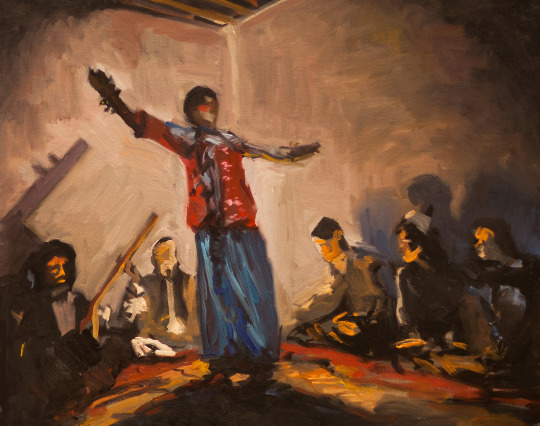
[Caption: "Cultural Taboos" 16" x 20" Oil on canvas, By Rasam]
Dancing boys are a common tradition throughout Afghanistan. Young, often orphan, boys are dressed in women's clothing and taken to private events where all male audience sit and watch them dance — throwing money at the dancer and the pimp prostituting them for a high price. These boys have not reached puberty and know what they are getting into.
These minors are in desperate need for money and often don't know what else to do — not having family or anything else that would shame them. The men on the other side are often sexually oppressed. Sexual for pleasure is often not practiced with their wives if they are married.
Moreover, single men don't have much of choice to explore their sexuality. People understand that by exploiting a boy it is easier because if a woman loses her chastity her life is destroyed, whereas a boy can somehow move on, get married, and have a family later in life.
This is an abstract painting with the people's faces blurred. The men in the piece may feel guilt and don't want to be known. Yet the composition presents a sense of being there, looking up at the figure dancing. I painted this subject matter to show a vile corner in Afghan society.
About Rasam
Rasam was born in Kabul, Afghanistan and came to the United States at a very young age. He began drawing at the age of nine. As a shy kid in a new environment, it was easier for him to communicate with others through art than with words. Over the past several years, his art education has been centered on classical realism.
Visit Rasam’s website: http://rasam.gallery/
More About the Dancing Boys
Documentary The Dancing Boys of Afghanistan
PBS FRONTLINE goes inside an ancient, illegal practice that's once again flourishing: an organized sex trade in young Afghan boys.
See the documentary.
0 notes